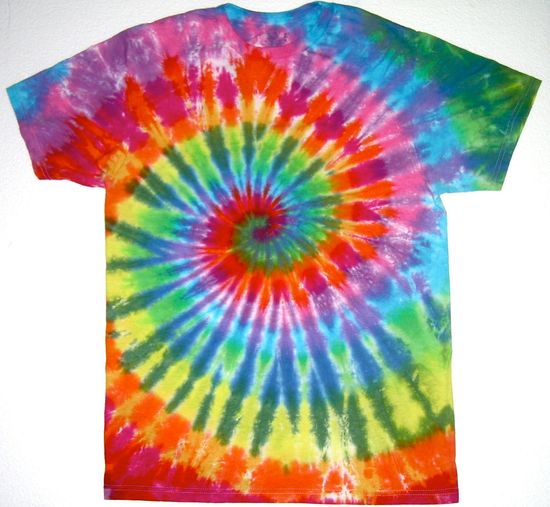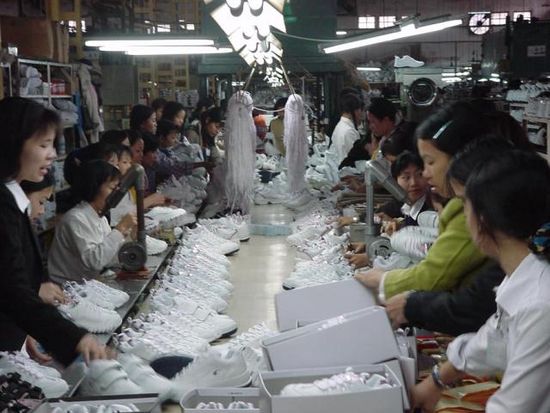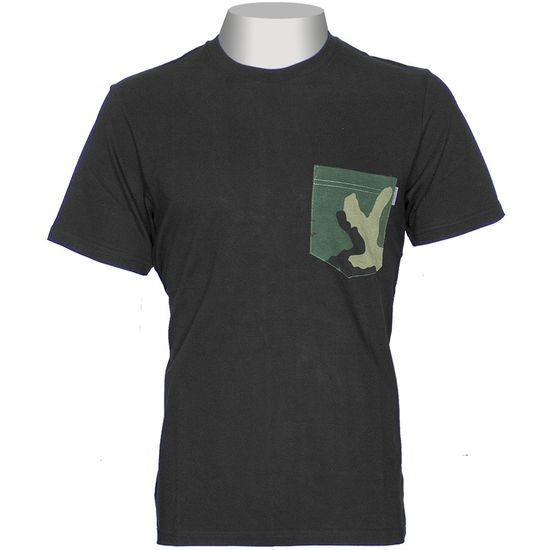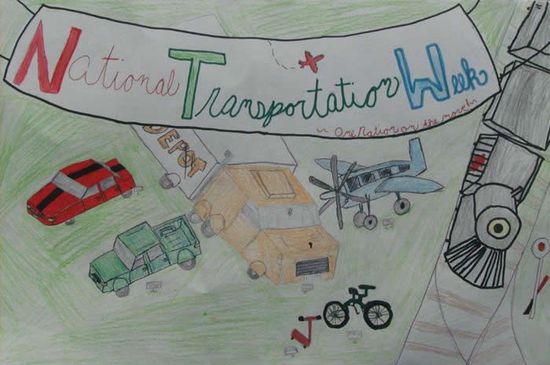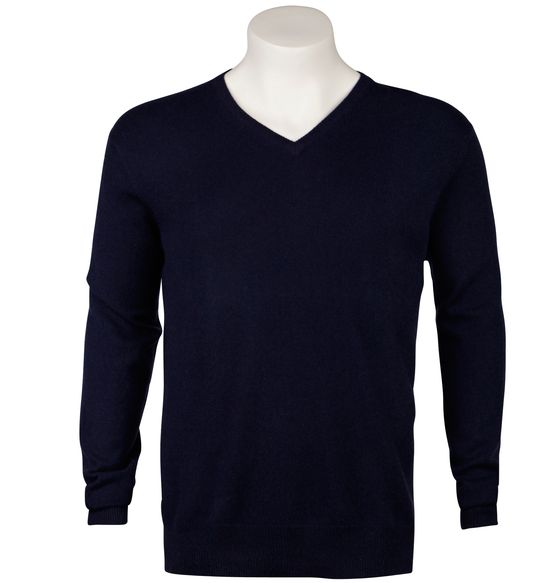1. History of Tie Dye
Tie dye originated in different parts of the world and thus it doesn’t belong to one particular region. The history and various forms of tie dye that have been practiced in different countries are as follows:
Tie Dye in Ancient Times
Tie dye is believed to be a prehistoric product. The researches has shown that the ancient people had used tie dye by applying flower’s juices, plant’s juices, leaves, stones and other substances on their cloths. But they might have not been aware of the fact that it is actually dying; for them it was just a way to decorate their cloths.
Archeologists have found printed pieces of fabrics in various parts of India which shows that ancient dyers had tried to make patterns of colors on fabrics using various dyes. Even the mummies of Egypt were found wrapped in a dyed fabric. So, it may be possible that tie dye techniques travel from India to Egypt and then to other parts of the world.
Tie Dye in Persia
Persia’s history shows the existence of tie dye centuries before the birth of Christ. Persians used the threads of Safflower, which is a quick dissolving herb as their dye material. They used to crush it and dissolve it in water to dye their cotton fabrics into deep yellow shades.
Tie Dye in China
Chinese had been using tie dye since the sixth century. But it fully developed and spread all over China during the T’ang Dynasty (618AD – 906AD). Chinese tie dye is also called “zha ran” or “jiao xie”. The tie dye silks of this era were found at Astana and Khotan in the graveyards and at Sin Kiang on the Old Silk Road. One interesting fact is that not everyone was allowed to wear the tie dye cloths; only Priests and rich people were allowed to wear it. They even had set separate standard colors for all the social classes.
Chinese were aware of the technique of turning, folding and tying the fabric in such a way that when it was dipped; different parts of the cloth would be dyed. They used to extract their dyes from flowers, leaves, roots, blackberries, onion, indigo, sage, red cabbage, safflower etc. They used a special technique of tie dye called “ikat” in which the threads are dyed before weaving the cloth.
Tie Dye in India
Indian tie dye is probably the most famous form of tie dye. It is believed that tie dye in India started almost five thousand years ago and hence is the oldest one. Indians used tie dye on silk materials as cotton was not available there at that time. Tie dye was known as “Bandhana work”, “Bandhani” and “Bandhej” in India and was unique in its own way. The dyers used to grew the nails of their thumb and forefingers very long and use them to pick small points of the fabric to tie in shapes of small dots before dyeing it.
Tie Dye in Japan
Tie dye started in Japan during the Nara period (552AD – 794AD). Japanese tie dye known as “shibori” is one of the most famous forms of tie dye which is used to make various forms of designs on cloths for elaborating kimonos. Japanese used tie dye on both silk and cotton materials.
Tie Dye in Africa
Tie dye has been widely used in all the African countries, especially Nigeria. Africans used tie dye to make dotted designs on woolen cloths and to produce magnificent indigo-dyed fabrics. The modern form of African tie dye involves synthetic dyes and patterns.
Tie Dye in United States
Tie dye started in United States during 1920’s but fully bloomed in 1960’s when everyone was emphasizing individuality. Tie-dyed sheets were very commonly used as room dividers, tablecloths, curtains and wall hangings. Tie dye banners of silk and cotton were used as backdrops for the concerts.
It was the era of 1980 that changed the fate of tie dye and made it a very stylish, highly skilled and labor intensive form of art. Permanent dyes in bright and earth tones were invented which replaced the easily fade dyes.
2. What can you tie dye (products)/ Tie dye ideas.
Adding color to your clothes – old and new !
The colorful clothes originally popularized by the members of the hippie subculture in the sixties have really stood the test of time in terms of popularity through out the world and is currently a hot (and colorful) favorite in the United States.
The method used to color clothes as well as a host of accessories is called the Tie dye method, where clothes are tied, either with string or rubber bands into various attractive patterns. Then the clothes are dyed, either by submerging them in a dye bath or by squirting dye solution onto them. Areas where the fabric is tied and in inner parts of folds, do not absorb dye, thus forming a pattern. This is also known as a resist technique (since the areas that are tied and the inner parts of folds resist dyeing). While the craft has been practiced in nearly every part of the world for hundreds of years, it probably began in ancient Asia and spread to Africa.
Many Americans who served in the Peace Corps in Africa during the 1960s learned tie dye designs from the native people, and on their return to the United States, they taught the craft to others.
Since each design is always different from any other and it is nearly impossible to predict the end result with absolute surety, the surprise forms the large part of the fun in its creation. Tie dyeing is a great way to give new life to an old or stained t-shirt, and recycling old clothes.
Natural fibers, such as 100% cotton are best suited for tie dye, but a combination of cotton and polyester can be used successfully. There are thousands or designs which are used, very imaginatively on the items, the most common of which is a t-shirt, but you can dye just about anything (shirt, pants, socks, handkerchief, pillowcase, sheets, curtains, tablecloth, etc., in fact for the home and the entire family).
Below is a list of some of the items you can tie dye:
– For Him: T Shirts, Scarves, Shirt, Trousers, Socks, Handkerchief, Neckties, bandana, Hoodie
– For Her: Yoga pants, Tee shirts, Socks, Underwears, Skirts, Tank tops, Hot Shorts, Capri pants, Pajamas, Kaftan
– For Home: Pillow case, Sheets, Curtains, Tablecloth , Napkins, Kitchen Mops, Tapestry wall hanging, kitchen apron.
– For infants and toddlers: Rompers (long and short sleeves), Diaper covers, Body suit, Bib, Long sleeve lap dress, Booty pants set, Onesie
3. How to Tie Dye (tie dye) a Shirt (Tie Dye Detailed Instructions)
Tie dye is the most experimental and unpredictable form of art. You can never figure out its final outcome unless it is completely processed and dried. If you keep on trying your hand on tie dye, you will learn to create many different effects that you would not have otherwise even heard about. You can make a number of tie dye items such as colorful t-shirts, sheets, pillow covers, curtains etc. A detailed instruction on tie dyeing a T-Shirt is given below.
Items for Tie Dyeing
You’ll need various items ready in order to tie dye your t-shirt depending on the brand of your dye. Below is a list of some important supplies you may need:
– T-Shirt: The first thing you need is a t-shirt; just be sure that it is at least 60% cotton or another dye able fiber.
– Rubber Gloves: It will protect your hands from the dye and hot water.
– Large Container: A large container with a capacity to hold at least 3 gallons is needed for the mixing of the dye.
– Spray Bottles: It is used to apply the dye.
– Long-Handles Utensil: It is used to stir the dye.
– Sodium Carbonate: it is used to pre-treat the item you are tie dyeing.
– Rubber Bands: It will be used to tie up the item you are tie dyeing.
– Salt: it is used to make the darker colors even more vibrant.
– Plastic Bag: It is used to keep the dyed item in it for approximately 24 hours.
– Newspaper and/or Plastic Garbage Bag: It is used to protect your work area.
– Rags, Paper Towels, Cleanser: It is used for the cleaning of utensils and work area.
Remember, the above listed items are just to give you an idea of what you may need. You should read the instructions given by the manufacturer of the particular dye you may use to know the exact items needed for tie dyeing.
Instructions to Tie Dye a T-Shirt
Tie dying is a very simple process. Some of the instructions may vary depending on the brand on the dye but the basic instructions are as follows:
– Place the T-Shirt – Firstly, place the t-shirt out flat.
– Tie the T-Shirt – Now tie the t-shirt using rubber bands or strings in spirals, accordion folds or sunbursts. These techniques of tying are given below:
Spirals – Grab the t-shirt at the center of the spiral and make a tight bundle by twisting it clockwise. Now tie the t-shirt with rubber bands and make several parts of pie shape. Spiral Tying is dyed by filling different colors in the pie shapes while turning the t-shirt over and repeat the same process on both sides.
Accordion Folds – This tie is used if you want to make band of colors in different directions. It may resemble this VVVVVVVVV. This type of tie is dyed by folding the stripe, binding it with rubber bands and then dyeing in strips across the folds.
Sunbursts – Hold the t-shirt from the center of the sun burst and make folds that emerge from that point. Now bind it with rubber bands and dye in strips across the folds.
– Prepare the Dye – Next mix your dye according to the manufacturer’s directions. But if you want to be really accurate you should measure the dye by weight and use the proportions of dye accordingly.
– Pre-treat the T-Shirt – Some brands of dyes needs you to wash and spin the t-shirt and then soak it in soda ash for at least 30 minutes and with others you have to simply dip it in hot water.
– Start Dyeing – Dye the t-shirt now. It is recommended to start with the lightest color incase of using many colors. Again follow the manufacturer’s direction. You may need to rinse or wait between colors. Some dyes need you to rinse immediately and others may need to sit it in some plastic bag for at least 24 hours.
– Final Touch – Ok now rinse the t-shirt in cold water and wash it for about 2-3 times to remove excess dye. You may dry it in a dryer or simply hang it to dry itself.
Again, the above mentioned instructions are basic guidelines to tie dye but the exact instructions may vary depending on the brand of the dye you are using. Therefore, you should read all the instructions and precautions given by the manufacturer very carefully. Remember, no two t-shirts will ever show the same results, no matter how hard you try! So be creative and you’ll be having fun in it.
4. Tie Dye Tips
No doubt tie dyeing is fun to do and it’ll become even more valuable and interesting if you follow the below guidelines and tips.
– Cover the Work Area: You should cover your work area by laying down some newspaper or garbage bags.
Wear Gloves: Always remember to protect your hands from hot water and stains by wearing rubber gloves while dyeing.
– Try it Outside: It is recommended to tie dye your item outside if the weather is good.
– Pre-Wash: You should wash the material before dyeing in order to remove anything it may have gotten on it from the manufacturer.
– Follow the Instructions: It is highly recommended that you follow the instructions given by the manufacturer of that particular dye while tie dyeing your fabric.
– No Softeners: No softeners or fabric sheets should be used during pre washing.
– Recommended Fabric: Cotton fabrics and almost all other nature fibers shows best results after tie dyeing.
– Hot Water: Dye should be mixed using hot water.
– Pre Decide: The design and colors you want on your fabric should be pre decided.
– Watch your Color Combination: You should remember the color wheel and apply the colors that come next to each other in the start like red – orange – yellow – green – blue etc
– Depth of Color: The depth of color is determined by the length of time the dye is used.
– Rinse Cautiously: The tie dye item should be rinse with warm water first and then with cold water.
– Wash Carefully: You should wash the tie dye products very carefully. Most of the tie dye item should be washed with cold water.
– Let it Dry: You should let your item dry flat.
– Wash the Containers: After dyeing all containers should be washed with hot water and cleanser or soap.
5. Where can you buy tie dye supplies (online and off)
Acquiring those Tie Dye Clothes – It’s easier than you think!
If you think buying the colorful, attractive tie dye items is tough in the United States, think again. There are innumerable websites on tie dye selling stuff on line. They accept mail orders and even payment can be made with almost all major credit cards. There are wide varieties of designs, colors, patterns which are displayed for items which range from personal casual wear to kids/infant wear to household items. And if you wish to learn “how to do”, there is equally large number of websites teaching you the art of tie dye.
Ordering is simple; where you have to specify your design and size and there you are…goods are delivered at your doorstep. Of course there are shops as well who specialize in tie dye wears.
Here are a few websites which you can visit for your shopping of tie dye goods:
Wildflowerdyes gives you access to an exhaustive range of clothes and accessories with vivid colors and designs which is surely to make an impact wherever and whenever you wear them.
EBay is a huge market of tie dye products.
Contact Richard@tie-dyes.com for fabulous tie dye products.
TrueTieDye is available offline at below address:
742B Maniton Avenue #3,
Maniton Springs,
CO 80829, USA.
Ph. (800) 796 5723.
TieDyeQueen offers online as well as offline supplies of tie dye products. You can contact the owner, Karen at Karen@TieDyeQueen.com. Their can be found offline at below address:
3511 Sierra Madre,
Columbia/Missouri 65203.
Ph. (573) 442 5791.
You can have custom-made tie dye apparels at dyemaster.net. Products of this company are also available offline at the following stores :
Headquarters
125E, 7th Street,
Tempe, Arizona .
Ph: (602) 956 5093.
Strawberry Fields
304E Main Street,
Salem, VA 24153.
Ph: (540) 375 6550.
You can see an excellent collection of tie dye products for the entire family as well as for your home just by logging on to mamashome.com.
Mamatiedye.com is yet another site which is as refreshing as the summer setting in and the vibrant colors offered with a wide range of items is bound to make your on line shopping memorable.
1. History of Tie Dye
Tie dye originated in different parts of the world and thus it doesn’t belong to one particular region. The history and various forms of tie dye that have been practiced in different countries are as follows:
Tie Dye in Ancient Times
Tie dye is believed to be a prehistoric product. The researches has shown that the ancient people had used tie dye by applying flower’s juices, plant’s juices, leaves, stones and other substances on their cloths. But they might have not been aware of the fact that it is actually dying; for them it was just a way to decorate their cloths.
Archeologists have found printed pieces of fabrics in various parts of India which shows that ancient dyers had tried to make patterns of colors on fabrics using various dyes. Even the mummies of Egypt were found wrapped in a dyed fabric. So, it may be possible that tie dye techniques travel from India to Egypt and then to other parts of the world.
Tie Dye in Persia
Persia’s history shows the existence of tie dye centuries before the birth of Christ. Persians used the threads of Safflower, which is a quick dissolving herb as their dye material. They used to crush it and dissolve it in water to dye their cotton fabrics into deep yellow shades.
Tie Dye in China
Chinese had been using tie dye since the sixth century. But it fully developed and spread all over China during the T’ang Dynasty (618AD – 906AD). Chinese tie dye is also called “zha ran” or “jiao xie”. The tie dye silks of this era were found at Astana and Khotan in the graveyards and at Sin Kiang on the Old Silk Road. One interesting fact is that not everyone was allowed to wear the tie dye cloths; only Priests and rich people were allowed to wear it. They even had set separate standard colors for all the social classes.
Chinese were aware of the technique of turning, folding and tying the fabric in such a way that when it was dipped; different parts of the cloth would be dyed. They used to extract their dyes from flowers, leaves, roots, blackberries, onion, indigo, sage, red cabbage, safflower etc. They used a special technique of tie dye called “ikat” in which the threads are dyed before weaving the cloth.
Tie Dye in India
Indian tie dye is probably the most famous form of tie dye. It is believed that tie dye in India started almost five thousand years ago and hence is the oldest one. Indians used tie dye on silk materials as cotton was not available there at that time. Tie dye was known as “Bandhana work”, “Bandhani” and “Bandhej” in India and was unique in its own way. The dyers used to grew the nails of their thumb and forefingers very long and use them to pick small points of the fabric to tie in shapes of small dots before dyeing it.
Tie Dye in Japan
Tie dye started in Japan during the Nara period (552AD – 794AD). Japanese tie dye known as “shibori” is one of the most famous forms of tie dye which is used to make various forms of designs on cloths for elaborating kimonos. Japanese used tie dye on both silk and cotton materials.
Tie Dye in Africa
Tie dye has been widely used in all the African countries, especially Nigeria. Africans used tie dye to make dotted designs on woolen cloths and to produce magnificent indigo-dyed fabrics. The modern form of African tie dye involves synthetic dyes and patterns.
Tie Dye in United States
Tie dye started in United States during 1920’s but fully bloomed in 1960’s when everyone was emphasizing individuality. Tie-dyed sheets were very commonly used as room dividers, tablecloths, curtains and wall hangings. Tie dye banners of silk and cotton were used as backdrops for the concerts.
It was the era of 1980 that changed the fate of tie dye and made it a very stylish, highly skilled and labor intensive form of art. Permanent dyes in bright and earth tones were invented which replaced the easily fade dyes.
2. What can you tie dye (products)/ Tie dye ideas.
Adding color to your clothes – old and new !
The colorful clothes originally popularized by the members of the hippie subculture in the sixties have really stood the test of time in terms of popularity through out the world and is currently a hot (and colorful) favorite in the United States.
The method used to color clothes as well as a host of accessories is called the Tie dye method, where clothes are tied, either with string or rubber bands into various attractive patterns. Then the clothes are dyed, either by submerging them in a dye bath or by squirting dye solution onto them. Areas where the fabric is tied and in inner parts of folds, do not absorb dye, thus forming a pattern. This is also known as a resist technique (since the areas that are tied and the inner parts of folds resist dyeing). While the craft has been practiced in nearly every part of the world for hundreds of years, it probably began in ancient Asia and spread to Africa.
Many Americans who served in the Peace Corps in Africa during the 1960s learned tie dye designs from the native people, and on their return to the United States, they taught the craft to others.
Since each design is always different from any other and it is nearly impossible to predict the end result with absolute surety, the surprise forms the large part of the fun in its creation. Tie dyeing is a great way to give new life to an old or stained t-shirt, and recycling old clothes.
Natural fibers, such as 100% cotton are best suited for tie dye, but a combination of cotton and polyester can be used successfully. There are thousands or designs which are used, very imaginatively on the items, the most common of which is a t-shirt, but you can dye just about anything (shirt, pants, socks, handkerchief, pillowcase, sheets, curtains, tablecloth, etc., in fact for the home and the entire family).
Below is a list of some of the items you can tie dye:
– For Him: T Shirts, Scarves, Shirt, Trousers, Socks, Handkerchief, Neckties, bandana, Hoodie
– For Her: Yoga pants, Tee shirts, Socks, Underwears, Skirts, Tank tops, Hot Shorts, Capri pants, Pajamas, Kaftan
– For Home: Pillow case, Sheets, Curtains, Tablecloth , Napkins, Kitchen Mops, Tapestry wall hanging, kitchen apron.
– For infants and toddlers: Rompers (long and short sleeves), Diaper covers, Body suit, Bib, Long sleeve lap dress, Booty pants set, Onesie
3. How to Tie Dye (tie dye) a Shirt (Tie Dye Detailed Instructions)
Tie dye is the most experimental and unpredictable form of art. You can never figure out its final outcome unless it is completely processed and dried. If you keep on trying your hand on tie dye, you will learn to create many different effects that you would not have otherwise even heard about. You can make a number of tie dye items such as colorful t-shirts, sheets, pillow covers, curtains etc. A detailed instruction on tie dyeing a T-Shirt is given below.
Items for Tie Dyeing
You’ll need various items ready in order to tie dye your t-shirt depending on the brand of your dye. Below is a list of some important supplies you may need:
– T-Shirt: The first thing you need is a t-shirt; just be sure that it is at least 60% cotton or another dye able fiber.
– Rubber Gloves: It will protect your hands from the dye and hot water.
– Large Container: A large container with a capacity to hold at least 3 gallons is needed for the mixing of the dye.
– Spray Bottles: It is used to apply the dye.
– Long-Handles Utensil: It is used to stir the dye.
– Sodium Carbonate: it is used to pre-treat the item you are tie dyeing.
– Rubber Bands: It will be used to tie up the item you are tie dyeing.
– Salt: it is used to make the darker colors even more vibrant.
– Plastic Bag: It is used to keep the dyed item in it for approximately 24 hours.
– Newspaper and/or Plastic Garbage Bag: It is used to protect your work area.
– Rags, Paper Towels, Cleanser: It is used for the cleaning of utensils and work area.
Remember, the above listed items are just to give you an idea of what you may need. You should read the instructions given by the manufacturer of the particular dye you may use to know the exact items needed for tie dyeing.
Instructions to Tie Dye a T-Shirt
Tie dying is a very simple process. Some of the instructions may vary depending on the brand on the dye but the basic instructions are as follows:
– Place the T-Shirt – Firstly, place the t-shirt out flat.
– Tie the T-Shirt – Now tie the t-shirt using rubber bands or strings in spirals, accordion folds or sunbursts. These techniques of tying are given below:
Spirals – Grab the t-shirt at the center of the spiral and make a tight bundle by twisting it clockwise. Now tie the t-shirt with rubber bands and make several parts of pie shape. Spiral Tying is dyed by filling different colors in the pie shapes while turning the t-shirt over and repeat the same process on both sides.
Accordion Folds – This tie is used if you want to make band of colors in different directions. It may resemble this VVVVVVVVV. This type of tie is dyed by folding the stripe, binding it with rubber bands and then dyeing in strips across the folds.
Sunbursts – Hold the t-shirt from the center of the sun burst and make folds that emerge from that point. Now bind it with rubber bands and dye in strips across the folds.
– Prepare the Dye – Next mix your dye according to the manufacturer’s directions. But if you want to be really accurate you should measure the dye by weight and use the proportions of dye accordingly.
– Pre-treat the T-Shirt – Some brands of dyes needs you to wash and spin the t-shirt and then soak it in soda ash for at least 30 minutes and with others you have to simply dip it in hot water.
– Start Dyeing – Dye the t-shirt now. It is recommended to start with the lightest color incase of using many colors. Again follow the manufacturer’s direction. You may need to rinse or wait between colors. Some dyes need you to rinse immediately and others may need to sit it in some plastic bag for at least 24 hours.
– Final Touch – Ok now rinse the t-shirt in cold water and wash it for about 2-3 times to remove excess dye. You may dry it in a dryer or simply hang it to dry itself.
Again, the above mentioned instructions are basic guidelines to tie dye but the exact instructions may vary depending on the brand of the dye you are using. Therefore, you should read all the instructions and precautions given by the manufacturer very carefully. Remember, no two t-shirts will ever show the same results, no matter how hard you try! So be creative and you’ll be having fun in it.
4. Tie Dye Tips
No doubt tie dyeing is fun to do and it’ll become even more valuable and interesting if you follow the below guidelines and tips.
– Cover the Work Area: You should cover your work area by laying down some newspaper or garbage bags.
Wear Gloves: Always remember to protect your hands from hot water and stains by wearing rubber gloves while dyeing.
– Try it Outside: It is recommended to tie dye your item outside if the weather is good.
– Pre-Wash: You should wash the material before dyeing in order to remove anything it may have gotten on it from the manufacturer.
– Follow the Instructions: It is highly recommended that you follow the instructions given by the manufacturer of that particular dye while tie dyeing your fabric.
– No Softeners: No softeners or fabric sheets should be used during pre washing.
– Recommended Fabric: Cotton fabrics and almost all other nature fibers shows best results after tie dyeing.
– Hot Water: Dye should be mixed using hot water.
– Pre Decide: The design and colors you want on your fabric should be pre decided.
– Watch your Color Combination: You should remember the color wheel and apply the colors that come next to each other in the start like red – orange – yellow – green – blue etc
– Depth of Color: The depth of color is determined by the length of time the dye is used.
– Rinse Cautiously: The tie dye item should be rinse with warm water first and then with cold water.
– Wash Carefully: You should wash the tie dye products very carefully. Most of the tie dye item should be washed with cold water.
– Let it Dry: You should let your item dry flat.
– Wash the Containers: After dyeing all containers should be washed with hot water and cleanser or soap.
5. Where can you buy tie dye supplies (online and off)
Acquiring those Tie Dye Clothes – It’s easier than you think!
If you think buying the colorful, attractive tie dye items is tough in the United States, think again. There are innumerable websites on tie dye selling stuff on line. They accept mail orders and even payment can be made with almost all major credit cards. There are wide varieties of designs, colors, patterns which are displayed for items which range from personal casual wear to kids/infant wear to household items. And if you wish to learn “how to do”, there is equally large number of websites teaching you the art of tie dye.
Ordering is simple; where you have to specify your design and size and there you are…goods are delivered at your doorstep. Of course there are shops as well who specialize in tie dye wears.
Here are a few websites which you can visit for your shopping of tie dye goods:
Wildflowerdyes gives you access to an exhaustive range of clothes and accessories with vivid colors and designs which is surely to make an impact wherever and whenever you wear them.
EBay is a huge market of tie dye products.
Contact Richard@tie-dyes.com for fabulous tie dye products.
TrueTieDye is available offline at below address:
742B Maniton Avenue #3,
Maniton Springs,
CO 80829, USA.
Ph. (800) 796 5723.
TieDyeQueen offers online as well as offline supplies of tie dye products. You can contact the owner, Karen at Karen@TieDyeQueen.com. Their can be found offline at below address:
3511 Sierra Madre,
Columbia/Missouri 65203.
Ph. (573) 442 5791.
You can have custom-made tie dye apparels at dyemaster.net. Products of this company are also available offline at the following stores :
Headquarters
125E, 7th Street,
Tempe, Arizona .
Ph: (602) 956 5093.
Strawberry Fields
304E Main Street,
Salem, VA 24153.
Ph: (540) 375 6550.
You can see an excellent collection of tie dye products for the entire family as well as for your home just by logging on to mamashome.com.
Mamatiedye.com is yet another site which is as refreshing as the summer setting in and the vibrant colors offered with a wide range of items is bound to make your on line shopping memorable.
